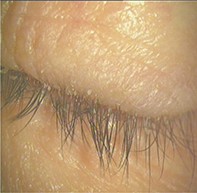Peer Reviewed
Feature Article Ophthalmology
Advances in the management of dry eye
Abstract
Moderate to severe dry eye can have a major impact on quality of life. Some patients continue to suffer despite the use of maximal standard therapy. A hierarchical approach based on disease severity is used in the management of dry eye.
Key Points
- Dry eye is the most common presentation to an ophthalmologist.
- Patients with dry eye may complain of a large variety of symptoms, including blurred vision, ocular discomfort, tiring, soreness, pain, burning, photophobia, itch and a sand or gravel sensation.
- Moderate to severe dry eye can have a major impact on a sufferer’s quality of life.
- There is no single gold-standard test for the diagnosis of dry eye; the presence of dry eye symptoms, ocular surface damage and tear film instability are used to diagnose this condition.
- A hierarchical approach based on disease severity is used in the management of dry eye.
- New agents such as topical cyclosporin represent a significant advance in the management of dry eye.
Purchase the PDF version of this article
Already a subscriber? Login here.

